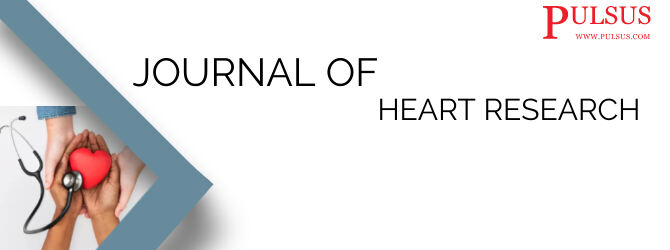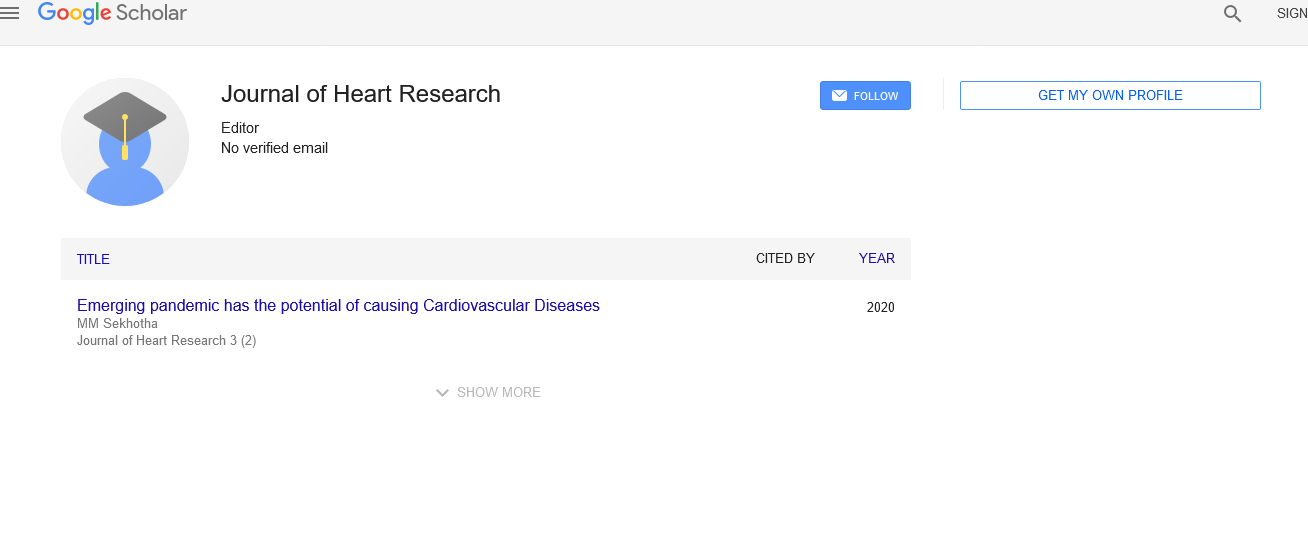Physiology of Supraventricular tachycardia
Received: 03-Dec-2021 Accepted Date: Dec 17, 2021; Published: 24-Dec-2021, DOI: 10.37532/ puljhr.2022
This open-access article is distributed under the terms of the Creative Commons Attribution Non-Commercial License (CC BY-NC) (http://creativecommons.org/licenses/by-nc/4.0/), which permits reuse, distribution and reproduction of the article, provided that the original work is properly cited and the reuse is restricted to noncommercial purposes. For commercial reuse, contact reprints@pulsus.com
Commentary
Supraventricular tachycardia (SVT) is an umbrella term for rapid heartbeat from the upper part of the heart. This is in contrast to another group of rapid heartbeats - ventricular tachycardia, which begins within the lower chambers of the heart. There are four main types of SVT: atrial fibrillation, atrial flutter, paroxysmal supraventricular tachycardia (PSVT) and Wolf-Parkinson. - White syndrome. Symptoms of SVT include heart palpitations, a feeling of weakness, sweating, shortness of breath, and / or chest pain.
These abnormal rhythms start from the atria or atrioventricular node. They are usually caused by one of two methods: re-entry or automatic ascent. Diagnosis is usually done with an electrocardiogram (ECG), holter monitor, or event monitor. Blood tests can be done to rule out certain underlying causes such as hyperthyroidism or electrolyte imbalance. Direct treatment depends on the type of SVT and may include medications, medical procedures, or surgery. Vagal maneuvers, or a process known as catheter ablation, may be effective in certain types. For atrial fibrillation, calcium channel blockers or beta blockers may be used to control the level. and selected patients benefit from blood thinners (anticoagulants) such as warfarin or novel anticoagulants.
The main pump chamber, the ventricle, is protected (to some extent) against extremely high levels from very high altitudes with a “gate mechanism” in the atrioventricular area, allowing only part of the rapid flow to pass into place. ventricles. The “bypass tract” device can bypass the AV node and its protection so that the acceleration rate is transmitted directly to the ventricles. This condition has symptoms found on the ECG. A congenital heart disease, Ebstein’s anomaly, is often associated with supraventricular tachycardia. Most have a small QRS complex, although, from time to time, electrical faults may produce a wide QRS complex that may mimic ventricular tachycardia (VT). In the clinical setting, the difference between small and broad complex tachycardia (supraventricular vs. ventricular) is significant as it is treated differently. In addition, ventricular tachycardia can rapidly degenerate into ventricular fibrillation and death and deserves a different consideration. In rare cases where complex tachycardia may be supraventricular, a number of algorithms are designed to assist in differentiation between them.In general, a history of established heart disease significantly increases the chances of tachycardia in ventricular origin.
Most have a small QRS complex, although, from time to time, electrical faults may produce a wide QRS complex that may mimic ventricular tachycardia (VT). In the clinical setting, the difference between small and broad complex tachycardia (supraventricular vs. ventricular) is significant as it is treated differently. In addition, ventricular tachycardia can rapidly degenerate into ventricular fibrillation and death and deserves a different consideration. In a very rare case where complex tachycardia may be supraventricular, a number of algorithms have been developed to help differentiate between them. In general, a history of systemic heart disease significantly increases the chances of tachycardia having a ventricular origin. Sinus tachycardia is physiologic or “appropriate” when rational stimulation, such as catecholamine surgery associated with fear, depression, or physical activity, causes tachycardia. It is similar to a normal sinus rhythm except for its rapid rate (> 100 beats per minute for adults). However, sinus tachycardia is considered part of a SVTenabled diagnosis by many sources. Sinoatrial node reentrant tachycardia (SANRT) is caused by a re-entry cycle formed in the SA node area, resulting in a P-wave of normal shape and size (morphology) that falls before the normal, small QRS complex. It cannot be electrocardiographically separated from sinus tachycardia unless it suddenly appears (or recorded on an ongoing monitoring device). It can sometimes be distinguished by its immediate response to vagal orientation.
Acknowledgement
None
Conflict of Interest
None





